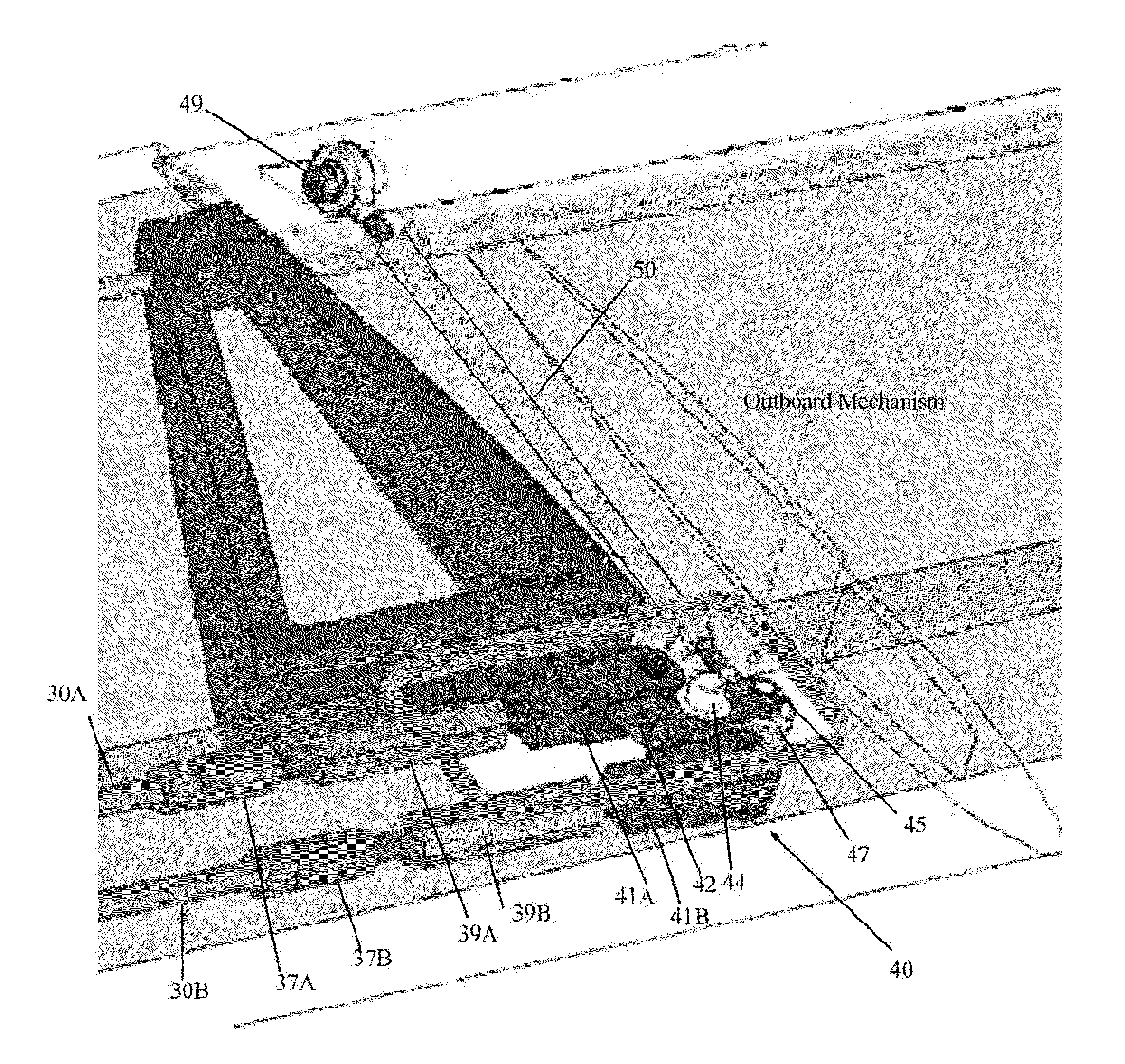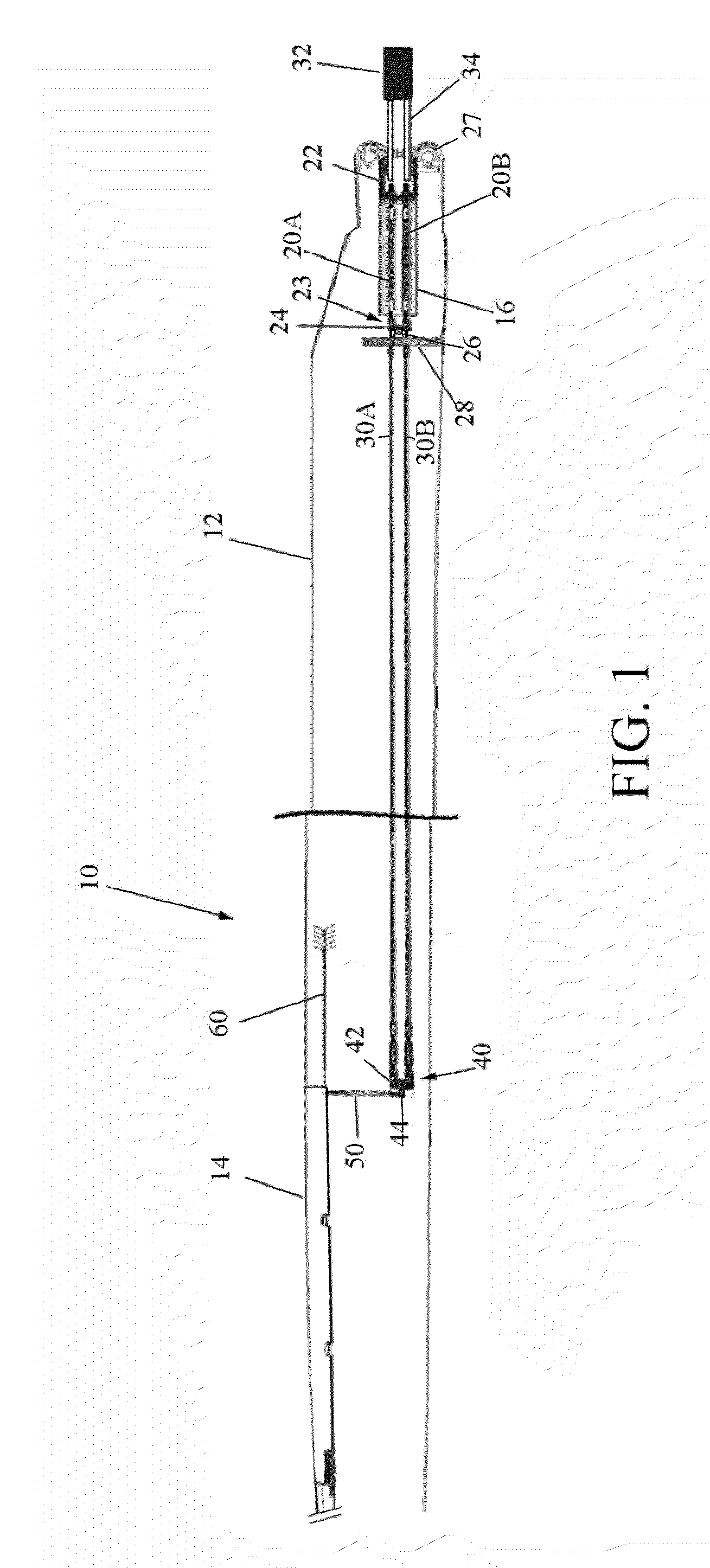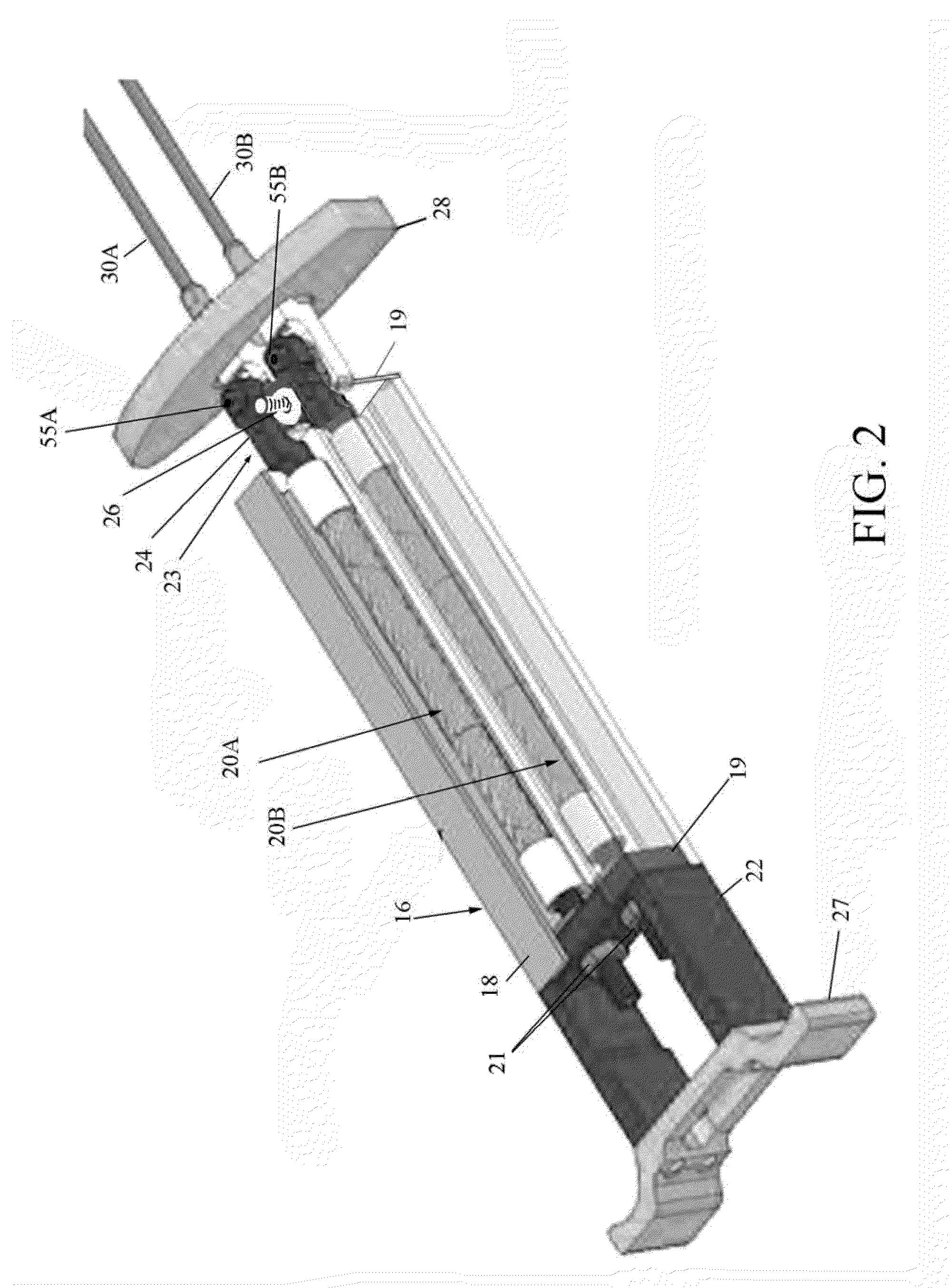Fluidic Artificial Muscle Actuation System For Trailing-Edge Flap
a technology of artificial muscle actuation and trailing edge, which is applied in the field of aerodynamic control systems, can solve the problems of high design space constraints, difficulty, and lack of an appropriately scaled actuation system, and achieve the effect of high frequency flap deflection
- Summary
- Abstract
- Description
- Claims
- Application Information
AI Technical Summary
Benefits of technology
Problems solved by technology
Method used
Image
Examples
Embodiment Construction
[0018]A flight control system for providing active individual trailing-edge flap control for vibration reduction, primary control, and noise cancellation using fluidic actuators is disclosed. The actuation system was developed with two primary design goals; first, to produce relatively large flap deflections at frequencies for vibration reduction in rotorcraft, and specifically up to ±10° of flap deflection at maximum rotor frequency of (N+1) / rev, where N is the number of rotor blades; and second, to produce even larger flap deflections at the 1 / rev rotor frequency to demonstrate the ability to satisfy the requirements for embedded primary control of the rotor. While the exact deflection levels needed for primary control are dependent on a wide range of factors such as flap sizing, blade torsional stiffness, flight condition, blade index angle, etc., it is considered that deflections on the order of ±15° to ±20° at 1 / rev are suitable for primary rotor control. Smaller flap deflectio...
PUM
 Login to View More
Login to View More Abstract
Description
Claims
Application Information
 Login to View More
Login to View More - R&D
- Intellectual Property
- Life Sciences
- Materials
- Tech Scout
- Unparalleled Data Quality
- Higher Quality Content
- 60% Fewer Hallucinations
Browse by: Latest US Patents, China's latest patents, Technical Efficacy Thesaurus, Application Domain, Technology Topic, Popular Technical Reports.
© 2025 PatSnap. All rights reserved.Legal|Privacy policy|Modern Slavery Act Transparency Statement|Sitemap|About US| Contact US: help@patsnap.com



